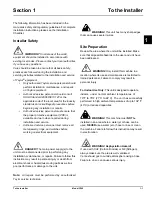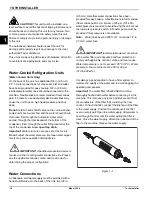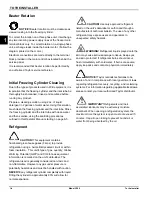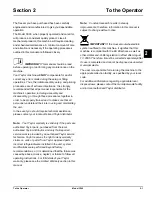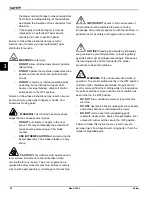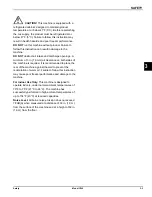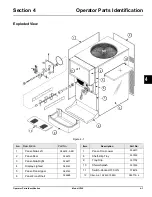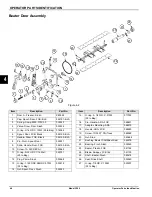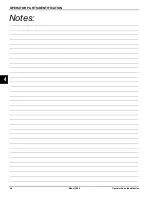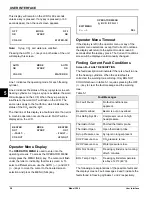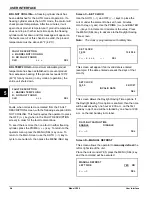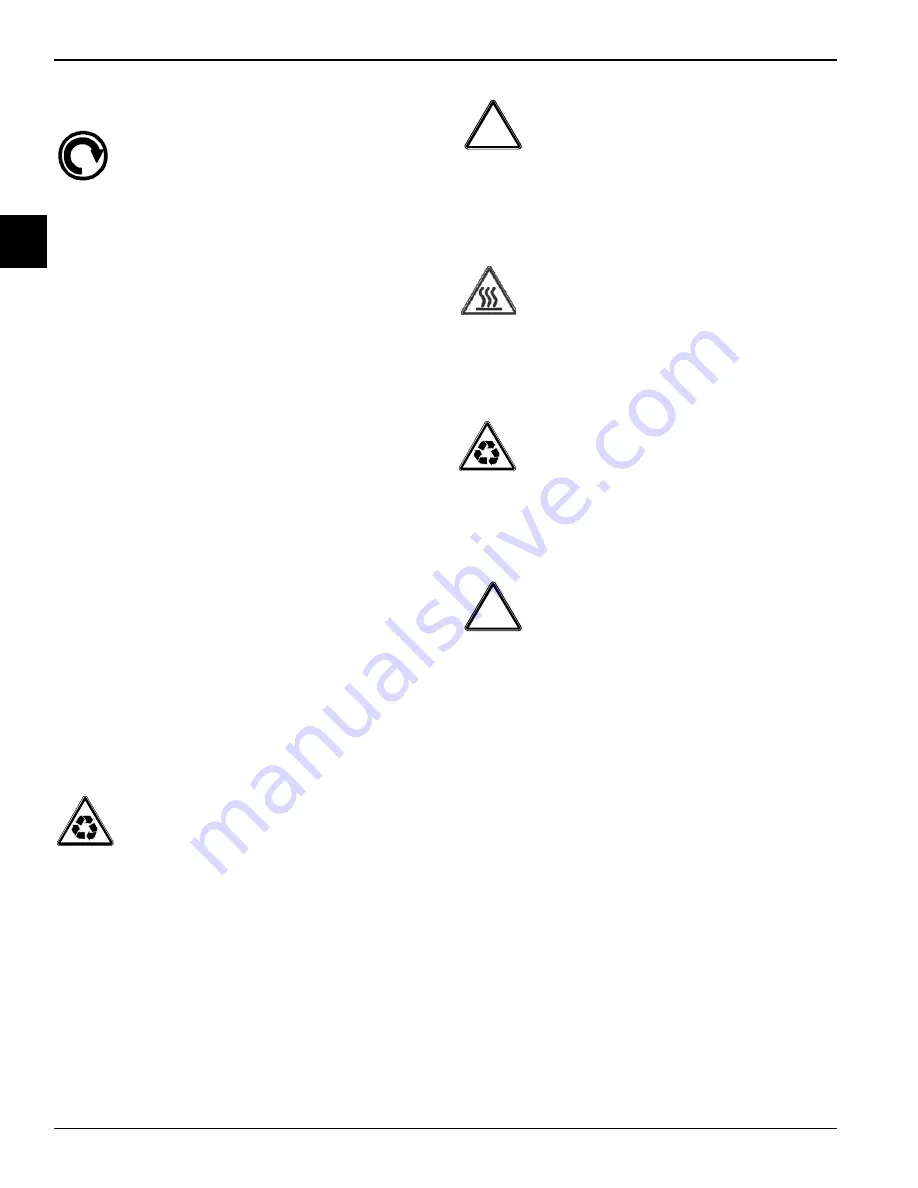
1-4
TO THE INSTALLER
Model C300
To the Installer
1
Beater Rotation
NOTICE!
Beater rotation must be clockwise as
viewed looking into the freezing cylinder.
To correct the rotation on a three-phase unit, interchange
any two incoming power supply lines at the freezer main
terminal block only. To correct rotation on a single-phase
unit, exchange leads inside the beater motor. (Follow the
diagram printed on the motor.)
Electrical connections are made directly to the terminal
block provided in the main control box located behind the
service panel.
It is recommended that beater rotation be performed by
an authorized Taylor service technician.
Initial Freezing Cylinder Cleaning
Due to the types of products used in FCB equipment, it is
imperative that the freezing cylinder and the inlet tube be
thoroughly brush cleaned, rinsed, and sanitized before
running any product.
Prepare a cleaning solution, using 2 oz. of liquid
detergent in 2 gallons of warm water. Using this solution,
brush clean the freezing cylinder and the inlet tube. Rinse
the freezing cylinder and the inlet tube with clean water
and then sanitize, using the sanitizing procedures
outlined in this Operator Manual, starting on page 6-5.
Refrigerant
CAUTION!
This equipment contains
fluorinated greenhouse gases (F-Gas) to provide
refrigeration using a hermetically sealed circuit or within
foam insulation. This unit's type of gas, quantity, Global
Warming Potential (GWP) and CO2 tonnes equivalent
information is recorded on the unit's data-label. The
refrigerant used is generally considered non-toxic and
non-flammable. However any gas under pressure is
potentially hazardous and must be handled with caution.
NEVER
fill any refrigerant cylinder completely with liquid.
Filling the cylinder to approximately 80% will allow for
normal expansion.
CAUTION!
Use only approved refrigerant
listed on the unit's data-label or authorized through a
manufacturer's technical bulletin. The use of any other
refrigerant may expose users and operators to
unexpected safety hazards.
WARNING!
Refrigerant liquid sprayed onto the
skin may cause serious damage to tissue. Keep eyes
and skin protected. If refrigerant burns should occur,
flush immediately with cold water. If burns are severe,
apply ice packs and contact a physician immediately.
NOTICE!
Taylor reminds technicians to be
aware of and in compliance with local government laws
regarding refrigerant recovery, recycling, and reclaiming
systems. For information regarding applicable local laws,
please contact your local authorized Taylor distributor.
IMPORTANT!
Refrigerants and their
associated lubricants may be extremely moisture
absorbent. When opening a refrigeration system, the
maximum time the system is open must not exceed 15
minutes. Cap all open tubing to prevent humid air or
water from being absorbed by the oil.
!
!
Summary of Contents for C300 NP
Page 14: ...3 4 SAFETY Model C300 Safety 3 Notes...
Page 18: ...4 4 OPERATOR PARTS IDENTIFICATION Model C300 Operator Parts Identification 4 Notes...
Page 26: ...5 8 USER INTERFACE Model C300 User Interface 5 Notes...
Page 40: ...6 14 OPERATING PROCEDURES Model C300 Operating Procedures 6 Notes...
Page 42: ...7 2 OPERATOR CHECKLIST Model C300 Operator Checklist 7 Notes...
Page 46: ...9 2 Model C300 Parts Replacement Schedule PARTS REPLACEMENT SCHEDULE 9 Notes...
Page 52: ...LIMITED WARRANTY ON PARTS 11 4 Model C300 Limited Warranty on Parts 11 Notes...





